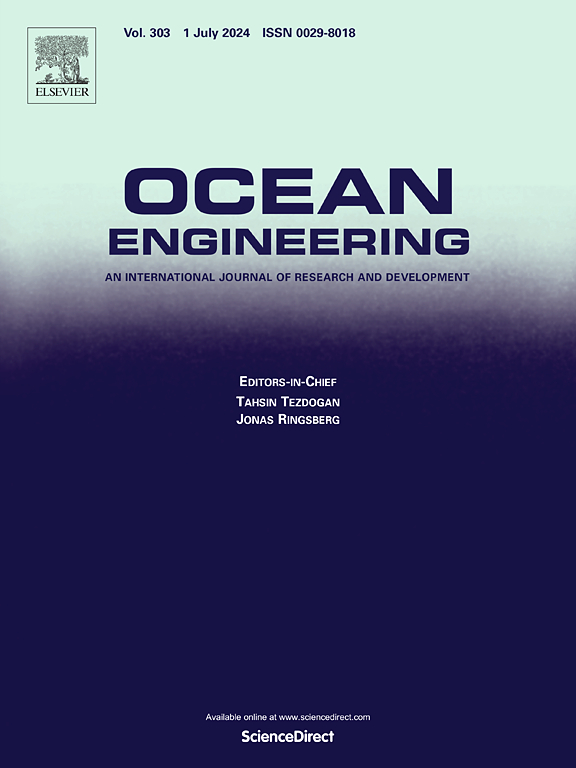Modeling fluid forces in 2-DOF forced motion experiments using neural network and analytical nonlinear approaches
IF 4.6
2区 工程技术
Q1 ENGINEERING, CIVIL
引用次数: 0
Abstract
This study explores the prediction of fluid forces on an oscillating cylinder in two degrees of freedom under free-stream flow. It combines experimental data, neural network models, and analytical force mechanisms to analyze hydrodynamic responses across varying motion amplitudes in both in-line and cross-flow directions. Contour plots of the average power coefficient identify distinct regions of free and forced vibration. Neural network models, trained on experimental data, effectively predict forces in free vibration regimes, although they capture actuator-induced noise. To address this, a novel quadratic drag force model is introduced, offering a more interpretable and noise-resistant approach for predicting nonlinear drag forces. Both models show significant potential in aligning with experimental data. This work highlights the importance of integrating data-driven models with physical understanding, improving predictive accuracy and system stability for fluid forces, while addressing challenges like actuator noise and system instability.
基于神经网络和解析非线性方法的二自由度强迫运动实验流体力建模
本研究探讨了自由流动条件下两自由度振荡圆柱体上流体力的预测。它结合了实验数据、神经网络模型和分析力机制,分析了在顺流和横流方向上不同运动幅度的水动力响应。平均功率系数的轮廓图区分了自由振动和强迫振动的不同区域。神经网络模型,在实验数据上训练,有效地预测自由振动状态下的力,尽管它们捕获致动器引起的噪声。为了解决这个问题,引入了一种新的二次阻力模型,为预测非线性阻力提供了一种更易于解释和抗噪声的方法。两种模型都显示出与实验数据一致的巨大潜力。这项工作强调了将数据驱动模型与物理理解相结合的重要性,提高了流体力的预测精度和系统稳定性,同时解决了执行器噪声和系统不稳定性等挑战。
本文章由计算机程序翻译,如有差异,请以英文原文为准。
求助全文
约1分钟内获得全文
求助全文
来源期刊

Ocean Engineering
工程技术-工程:大洋
CiteScore
7.30
自引率
34.00%
发文量
2379
审稿时长
8.1 months
期刊介绍:
Ocean Engineering provides a medium for the publication of original research and development work in the field of ocean engineering. Ocean Engineering seeks papers in the following topics.
 求助内容:
求助内容: 应助结果提醒方式:
应助结果提醒方式:


